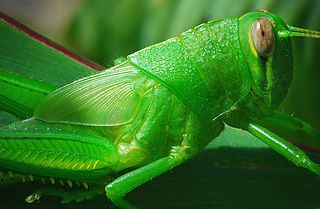Biomimicry, Art, and Architecture

Wow. Biomimicry at work again. For thousands of years, and in earnest since the time of Aristotle, we’ve been learning about nature. Much more recently, however, we’ve found out that we can learn from nature – and that’s what biomimicry is all about. It took literally billions of years to evolve today’s grasshopper. A few decades ago, a few bright people started to ask: Isn’t there something we can learn from all that enormous investment of time and resources – simply by looking at the little guy and the way he deals with the challenges he faces in his day-to-day life? In this case, and many thousands of others, the answer is yes.
Remember the concept of bimetallic strips, used in thermometers? When the temperature changes, one side expands or contracts faster than the other, causing the whole device to bend. Imagine a really cool looking piece of art, made of this stuff, that serves to open or close air ducting, as explained in the article linked here. As it turns out, the grasshopper has an analogous approach to letting off unwanted body heat.
